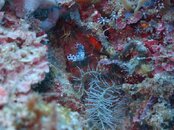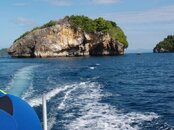ukdave0
Contributor
Trip Report March 2012- Tambora Liveaboard, Triton Bay - Ambon (12 nights)
This was my 2nd trip aboard the Tambora (previously Borneo), 5th diving trip to Indonesia.
Getting There
Flew from Atlanta to Jakarta via Seoul on Korean Air. 14 hours to Seoul then another 7 hours to Jakarta. Very nice airline with the advantage of not having to do an intermediate West Coast stop.
Jakarta to Kaimana was on Lion Air/ Wings Air via Ambon. Departed Jakarta at 1:30 am. All flights on time. Lion Air was a newer 737-900 but was the most uncomfortable flight I’ve ever been on due to extremely tight seat pitch.
Return flight was from Ambon to Jakarta via Makassar on Sriwijaya Air. Nice flight. All Indonesian flights were arranged by Tambora Dive.
Itinerary
12 night trip. Started with a pick-up at Kaimana Airport followed by a few hours transit to Triton Bay. Dove Triton Bay area for 4 or 5 days then to Watubela Islands for 1 day, Banda Islands for 2 or 3 days, and finally Ambon for the last couple of days.
Banda Sea weather was unsettled and so schedule was flexible with plans A, B and C to make sure we were able to make it back to Ambon. In the end, the Banda Sea waves calmed down to nearly flat for our overnight transits.
The Boat
The Tambora is the typical wooden Phinis style boat. Overall, as comfortable as any Liveaboard I’ve been on. Boat has room for 14 passengers with only 4 aboard for this trip. Owner (from Germany) and wife live on the boat. The boat has 2 Cruise Directors from USA who also serve as the dive guides. The Dive Guides have been in Indonesia for several years so are quite knowledgeable about the area.
Diving is done from 2 aluminum tenders each capable of holding about 10 divers comfortably. All dive gear was put into the tenders before the dives by the crew. Standard dive times were 8:00, 11:00, 15:00 then ~18:30 for the night dive. Suiting up and dive briefing were in the front of the boat. Several nice wooden chaise loungers under the sun awning made these tasks comfortable.
Meals were early light breakfast, made to order breakfast, lunch, afternoon snacks, then dinner. Lunch was buffet style with generally 2 entrees and 2 or 3 more items such as rice and vegetables. Dinner was a served meal with soap and a choice of Western or Indonesian style entrée. Meals were all very good with some excellent.
Beer and sodas were included at no charge.
The Diving
Three different types of diving during this trip; Triton Bay, Banda Sea islands, and Ambon.
Triton Bay area has a “no one’s every been here” feel to it (only saw other divers once in 4 days and they were from the conservation group). Hard and soft corals aplenty with no sign of damage. The nutrient rich water resulted in lower visibilities but also clouds of schooling fish. The fish are definitely not used to divers and I thought exhibited unique behaviors. There were vast forests of black coral (the white variety), many unique nudis and crabs, and several woebegone sharks.
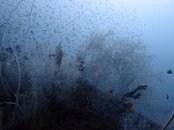
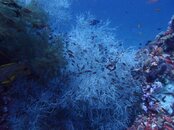
The diving at the Banda Sea Islands (Banda Islands and Watubela) consisted of mainly steep wall dives in clear blue waters. We didn’t see any other divers here either but human presence was evident in the lower fish densities, coral damage, and bits and pieces of nets in the walls. The Banda Island harbor was very scenic. The Dutch town/ fort land tours were very nice.
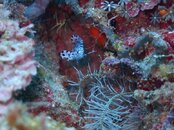
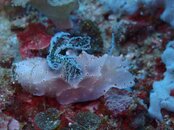
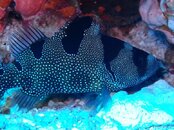
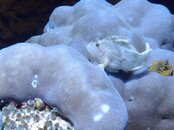
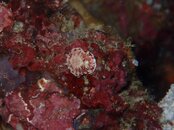
The last 4 dives were at Laha on Ambon Island. This was all muck diving in populated area (meaning boat traffic and trash).
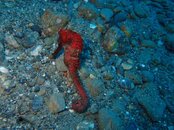



Summary
It was a very good trip. The boat was in great condition and the service from the crew was outstanding. Dive facilities and dive operations were top notch. The food was plentiful and tasty. Beer flowed freely after the last dive of the day.
Initial concerns about 7 meter waves in the Banda Sea caused us to alter the itinerary a little and resulted in a couple of less than stellar exploration dives (but still, who doesn’t love diving in water probably no one’s ever dove before). After the unspoiled beauty of Triton Bay it was sad to see the effect of humans in the water at the Banda Islands. But then again, muck diving at Laha was great probably due to the byproducts of humans.
This was my 2nd trip aboard the Tambora (previously Borneo), 5th diving trip to Indonesia.
Getting There
Flew from Atlanta to Jakarta via Seoul on Korean Air. 14 hours to Seoul then another 7 hours to Jakarta. Very nice airline with the advantage of not having to do an intermediate West Coast stop.
Jakarta to Kaimana was on Lion Air/ Wings Air via Ambon. Departed Jakarta at 1:30 am. All flights on time. Lion Air was a newer 737-900 but was the most uncomfortable flight I’ve ever been on due to extremely tight seat pitch.
Return flight was from Ambon to Jakarta via Makassar on Sriwijaya Air. Nice flight. All Indonesian flights were arranged by Tambora Dive.
Itinerary
12 night trip. Started with a pick-up at Kaimana Airport followed by a few hours transit to Triton Bay. Dove Triton Bay area for 4 or 5 days then to Watubela Islands for 1 day, Banda Islands for 2 or 3 days, and finally Ambon for the last couple of days.
Banda Sea weather was unsettled and so schedule was flexible with plans A, B and C to make sure we were able to make it back to Ambon. In the end, the Banda Sea waves calmed down to nearly flat for our overnight transits.
The Boat
The Tambora is the typical wooden Phinis style boat. Overall, as comfortable as any Liveaboard I’ve been on. Boat has room for 14 passengers with only 4 aboard for this trip. Owner (from Germany) and wife live on the boat. The boat has 2 Cruise Directors from USA who also serve as the dive guides. The Dive Guides have been in Indonesia for several years so are quite knowledgeable about the area.
Diving is done from 2 aluminum tenders each capable of holding about 10 divers comfortably. All dive gear was put into the tenders before the dives by the crew. Standard dive times were 8:00, 11:00, 15:00 then ~18:30 for the night dive. Suiting up and dive briefing were in the front of the boat. Several nice wooden chaise loungers under the sun awning made these tasks comfortable.
Meals were early light breakfast, made to order breakfast, lunch, afternoon snacks, then dinner. Lunch was buffet style with generally 2 entrees and 2 or 3 more items such as rice and vegetables. Dinner was a served meal with soap and a choice of Western or Indonesian style entrée. Meals were all very good with some excellent.
Beer and sodas were included at no charge.
The Diving
Three different types of diving during this trip; Triton Bay, Banda Sea islands, and Ambon.
Triton Bay area has a “no one’s every been here” feel to it (only saw other divers once in 4 days and they were from the conservation group). Hard and soft corals aplenty with no sign of damage. The nutrient rich water resulted in lower visibilities but also clouds of schooling fish. The fish are definitely not used to divers and I thought exhibited unique behaviors. There were vast forests of black coral (the white variety), many unique nudis and crabs, and several woebegone sharks.


The diving at the Banda Sea Islands (Banda Islands and Watubela) consisted of mainly steep wall dives in clear blue waters. We didn’t see any other divers here either but human presence was evident in the lower fish densities, coral damage, and bits and pieces of nets in the walls. The Banda Island harbor was very scenic. The Dutch town/ fort land tours were very nice.





The last 4 dives were at Laha on Ambon Island. This was all muck diving in populated area (meaning boat traffic and trash).




Summary
It was a very good trip. The boat was in great condition and the service from the crew was outstanding. Dive facilities and dive operations were top notch. The food was plentiful and tasty. Beer flowed freely after the last dive of the day.
Initial concerns about 7 meter waves in the Banda Sea caused us to alter the itinerary a little and resulted in a couple of less than stellar exploration dives (but still, who doesn’t love diving in water probably no one’s ever dove before). After the unspoiled beauty of Triton Bay it was sad to see the effect of humans in the water at the Banda Islands. But then again, muck diving at Laha was great probably due to the byproducts of humans.



